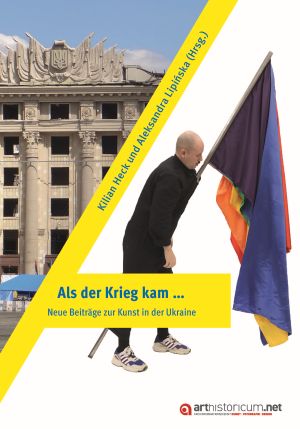Autor/innen
Katja Bernhardt, Robert Born, Mateusz Kapustka, Antje Kempe, Aleksandra Lipińska, Beate Störtkuhl
Die blinden Flecken der Kunstgeschichte?
Das Beispiel Ukraine
Katja Bernhardt ist Kunst- und Bildhistorikerin und wissenschaftliche Mitarbeiterin am Nordost-Institut, Lüneburg. Neben der Geschichte des Faches Kunstgeschichte liegen ihre Forschungsschwerpunkte auf der historischen Analyse von Architektur und Stadtraum sowie der visuelle Geschichte Ost- und Ostmitteleuropas unter besonderer Berücksichtigung Polens.
https://orcid.org/0000-0002-9030-5996
Robert Born ist Kunsthistoriker und seit September 2021 Wissenschaftlicher Mitarbeiter am Bundesinstitut für Kultur und Geschichte der Deutschen im östlichen Europa in Oldenburg. Zu seinen Forschungsschwerpunkten zählen die Kulturkontakte zwischen dem Osmanischen Orient und Ostmitteleuropa, die Kunsthistoriographie in Ostmittel- und Südost-europa vom 18. bis zum 20. Jahrhundert und die Barockkunst in Ostmittel- und Südosteuropa.
https://orcid.org/0000-0003-3491-8680
Mateusz Kapustka studierte Kunstgeschichte und Philosophie, ist seit 2016 Privatdozent am Kunsthistorischen Institut der Universität Zürich und 2022/2023 Vertretungsprofessor für Kunstgeschichte Osteuropas an der Humboldt-Universität zu Berlin. Seine Forschungsthemen sind u. a. Bildkonflikte und historische Evidenzkonstruktionen, Anachronismus und Nachleben der Bilder, Bildpropaganda der Herrschaft, Ausschließung und Fremdheit (vom Mittelalter bis zum 18. Jh.), wie auch transkulturelle Aspekte von historischen Bildbegriffen.
Antje Kempe ist Kunst- und Bildwissenschaftlerin an der Universität Greifswald, wo sie am Interdisziplinären Forschungszentrum Ostseeraum (IFZO) in einem Projekt zum „Geteilten Erbe“ tätig ist. Zu ihren Forschungsschwerpunkten gehören neben einer ecological art history unter besonderer Berücksichtigung der Garten- und Landschaftsarchitektur und damit verbundener künstlerischer Praktiken auch die Analyse von Erinnerungskulturen im nördlichen und östlichen Europa sowie die Kunsthistoriographie.
Beate Störtkuhl ist Kunsthistorikerin und Wissenschaftskoordinatorin am Bundesinstitut für Kultur und Geschichte der Deutschen im östlichen Europa in Oldenburg, und Privatdozentin an der Carl von Ossietzky Universität ebenda. Ihre Forschungsschwerpunkte sind die Architekturgeschichte des 20. Jahrhunderts, insbesondere in Ostmitteleuropa, sowie die Geschichte der Kunstwissenschaft und Denkmalpflege.








